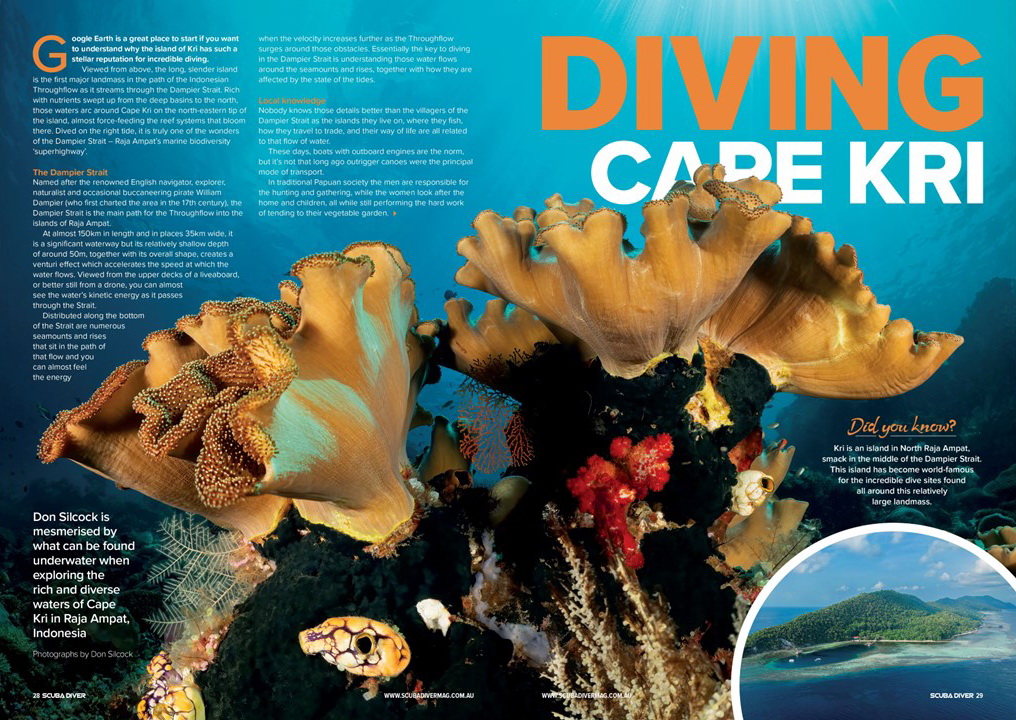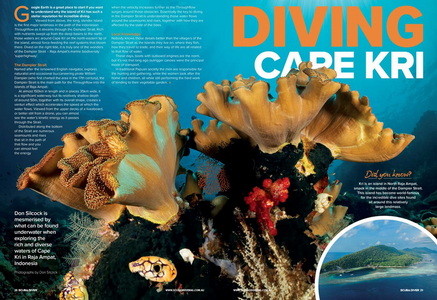 World’s Best House Reef… Google Earth is a great place to start if you want to understand why the island of Kri has such a stellar reputation for incredible diving.
World’s Best House Reef… Google Earth is a great place to start if you want to understand why the island of Kri has such a stellar reputation for incredible diving.
Viewed from above, the long, slender island is the first major landmass in the path of the Indonesian Throughflow as it streams through the Dampier Strait.
Rich with nutrients swept up from the deep basins to the north, Those waters arc around Cape Kri on the north-eastern tip of the island. Almost force-feeding the reef systems that bloom there.
Dived on the right tide it is truly one of the wonders of the Dampier Strait, Raja Ampat’s marine biodiversity “superhighway”.
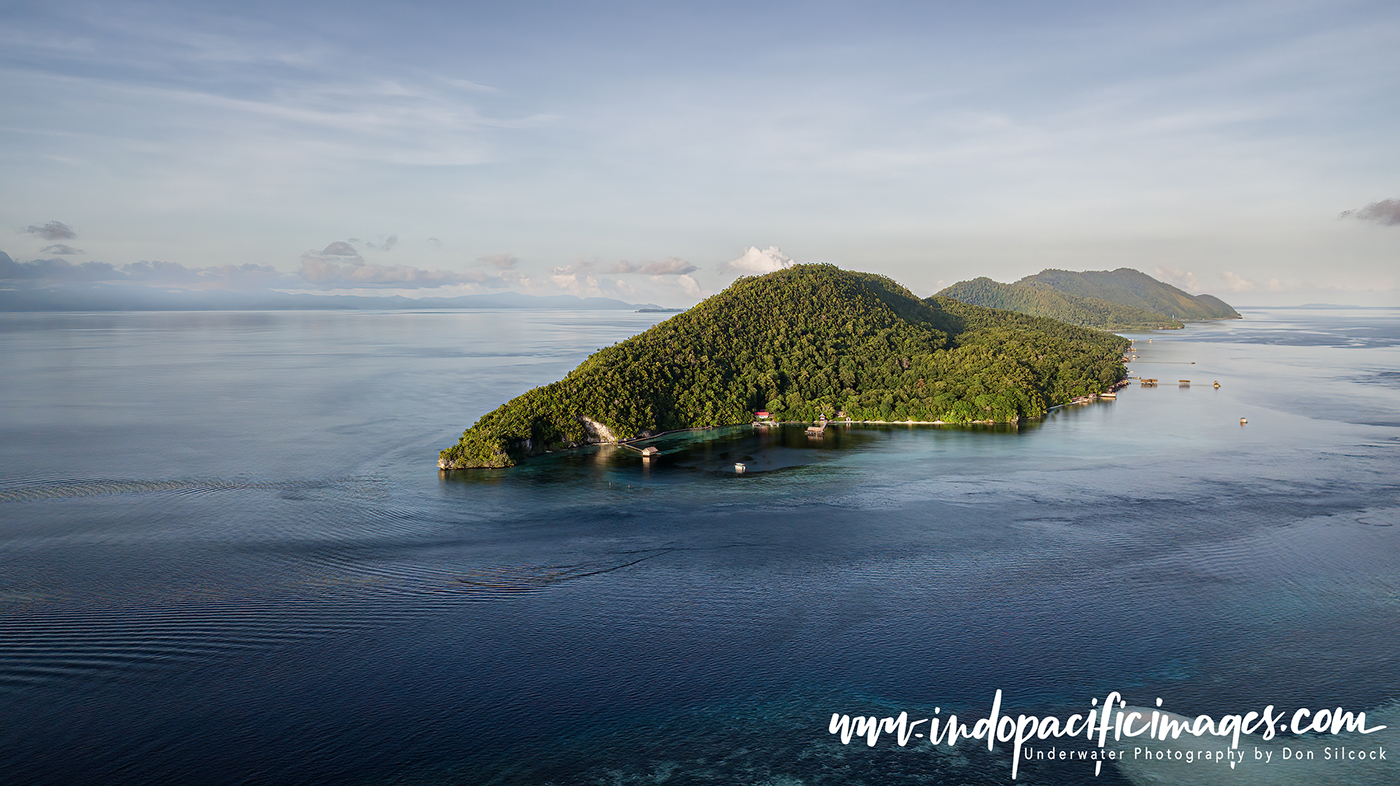
The Dampier Strait
Named after the renowned English navigator, explorer, naturalist, and occasional buccaneering pirate William Dampier (who first charted the area in the 17th century), the Dampier Strait is the main path for the Throughflow into the islands of Raja Ampat.
At almost 150km in length and in places 35km wide, it is a significant waterway. But its relatively shallow depth of around 50m, together with its overall shape. Creates a venturi effect which accelerates the speed at which the water flows. Viewed from the upper decks of a liveaboard, or better still from a drone, you can almost see the water’s kinetic energy as it passes through the Strait.
Distributed along the bottom of the Strait are numerous seamounts and rises that sit in the path of that flow. And you can almost feel the energy when the velocity increases further as the Throughflow surges around those obstacles. Essentially the key to diving in the Dampier Strait is understanding those water flows around the seamounts and rises. Together with how they are affected by the state of the tides.
Local Knowledge…
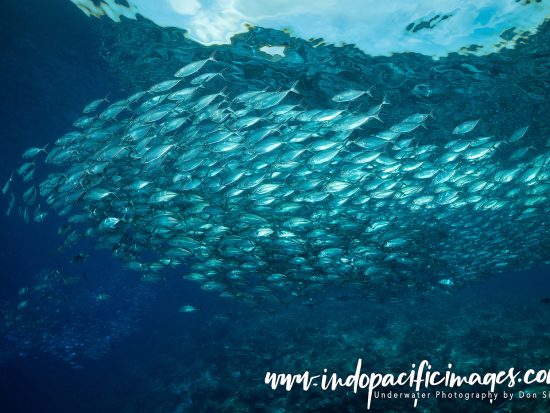 Nobody knows those details better than the villagers of the Dampier Strait. As the islands they live on, where they fish, how they travel to trade, and their way of life are all related to that flow of water.
Nobody knows those details better than the villagers of the Dampier Strait. As the islands they live on, where they fish, how they travel to trade, and their way of life are all related to that flow of water.
These days, boats with outboard engines are the norm. But it’s not that long ago outrigger canoes were the principal mode of transport.
In traditional Papuan society the men are responsible for the hunting and gathering. While the women look after the home and children all while still performing the hard work of tending to their vegetable garden.
In much the same way we teach our children about the dangers around us in everyday life. From an early age young boys would be schooled by their fathers on how to read the signs of where the dangers are and where the fish would probably gather.
While they had no way of understanding what was under the water, the Papuan villagers can read the signs on the surface better than anybody.
World’s Best House Reef and Max Ammer…
The first person to harness that knowledge to explore underwater in the Dampier Strait was Max Ammer, who arrived in Raja Ampat in 1989 looking for the aircraft wrecks he had heard about on the WWII memorabilia grapevine.
He found many in the dense jungle and rainforest that covers most of the above water terrain. But numerous others had come down over water… But, with the aid of wartime records and the memories of older villagers, he was able to identify their most probable locations.
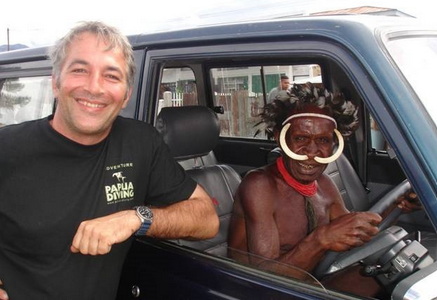
But to actually find them meant sourcing scuba equipment, together with a compressor and bringing it all to the Dampier Strait.
It’s hard to actually visualise the risks Max took back then… But if you contrast the way we dive these days with all the safety equipment we carry and the tender boats on patrol above – ready to rescue us if we get in trouble.
Then imagine Max diving alone from an outrigger canoe. Guided on the surface by local villagers who had stepped up to help him.
Almost totally reliant on their ability to follow his progress underwater and then retrieve him when he surfaced again. Quite an adventure, to say the least!
Somewhat ironically, while he came to Raja Ampat in search of WWII aircraft memorabilia. By chance, what Max found underwater is what we now know as some of the richest marine biodiversity in the world!
The First Tourists
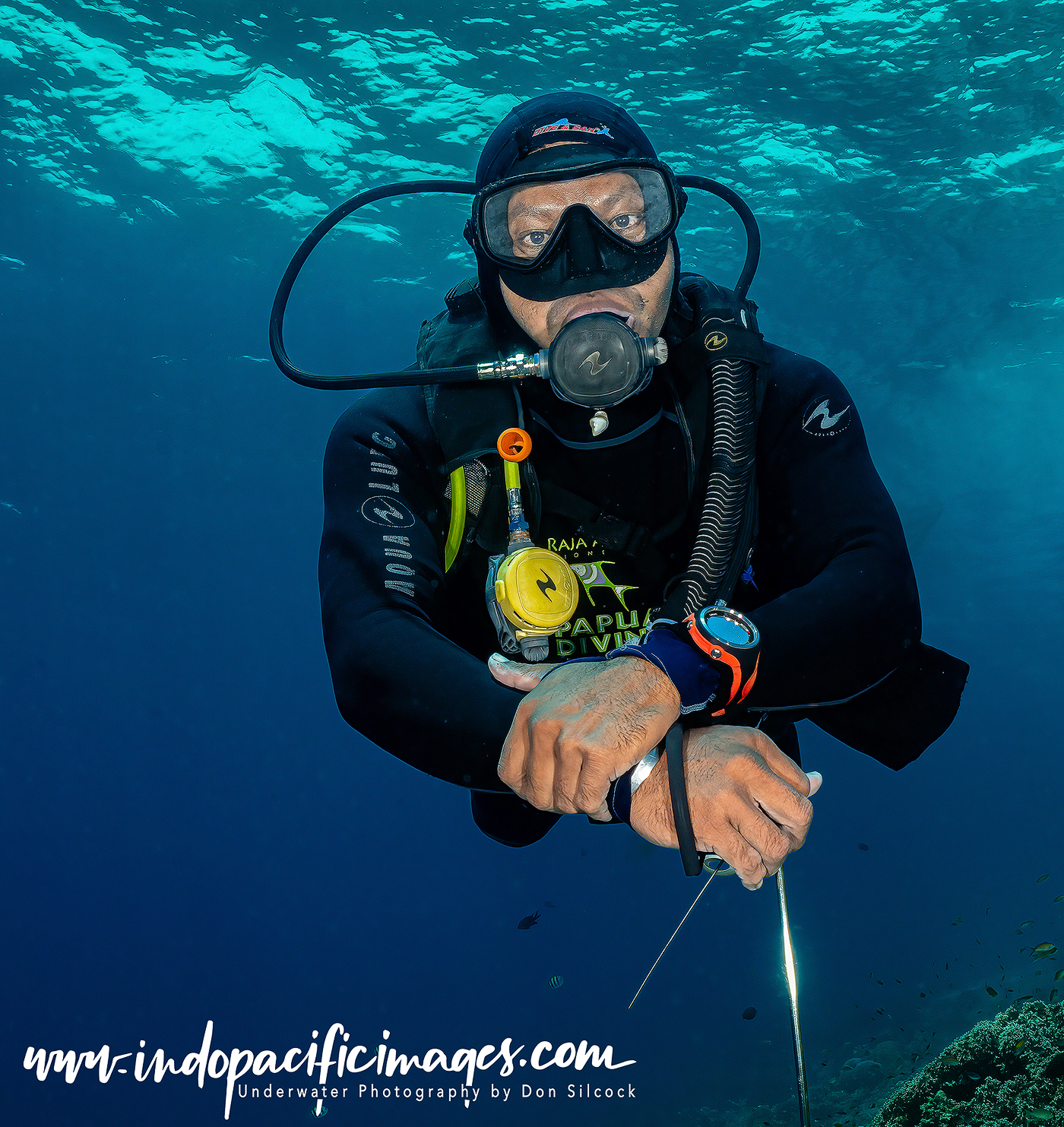
It was his experience with those friendly Papuan villagers that convinced Max Ammer to set up his first “eco beach camp” on the north coast of Kri Island on the site that now hosts his Eco Resort.
The calculus being that tourism, and the jobs that would flow from it. Would offer the quickest path to a regular income. In an area where subsistence living, with almost no government services or support, was the status quo.
Woven into that calculus was that many of those tourism jobs would require the training of Papuans. Albeit with absolutely zero experience in hospitality, but very willing to learn.
While the other side of the coin was that Papuans with intuitive knowledge of how those waters flow in the Strait could become the very best dive guides possible once they learned how to dive!
The World’s Best House Reef – Really?
House reefs (in my experience) are rarely, if ever, referred to as world-class diving. Instead, they are usually the final option for the day. Coda for the good stuff is done, but it you really insist…
Max Ammer’s second resort is also on the island of Kri. But not on the north coast like the Eco Resort, instead, it is located in the bay near the tip of Cape Kri and comes complete with its own “blue hole”.
That location puts it just minutes from the incredible reefs of Cape Kri. Hence the claim to the “world’s best house reef”. And, while the proximity of Sorido Bay to Cape Kri is a given, what about the claim to be the best?
Over the years Max has operated in the Dampier Strait he has always gone out of his way to support conservation initiatives both above and below the water. Including working closely with Conservation International (CI) who have done some incredible work in Raja Ampat. Among the many things they have accomplished, CI have been able to quantify the biodiversity of Raja Ampat. Which has been a huge contributing factor in achieving what they have.
Renowned Australian ichthyologist Dr. Gerry Allen (co-author of Reef Fish Identification – Tropical Pacific) developed the methodology behind all that.
Yes – Really…
In 2012 Max asked Gerry Allen to quantify the fish biodiversity on Cape Kri. Here is how Gerry, who has logged more than 12,000 dives in his long career, described that experience:
“One of my favourite places to dive in Raja Ampat is Cape Kri. Over a decade ago, years before Raja became THE place to dive in the world, I counted 327 fish species on a single dive there. I went back about two years ago and couldn’t believe the positive changes on the site. Most impressionable to me was the fact that the fish had become accustomed to divers. I didn’t even have to look for fish. They found me! The survey was the highest species count I’ve ever tallied on one dive, 374 distinct species in 90 minutes!”
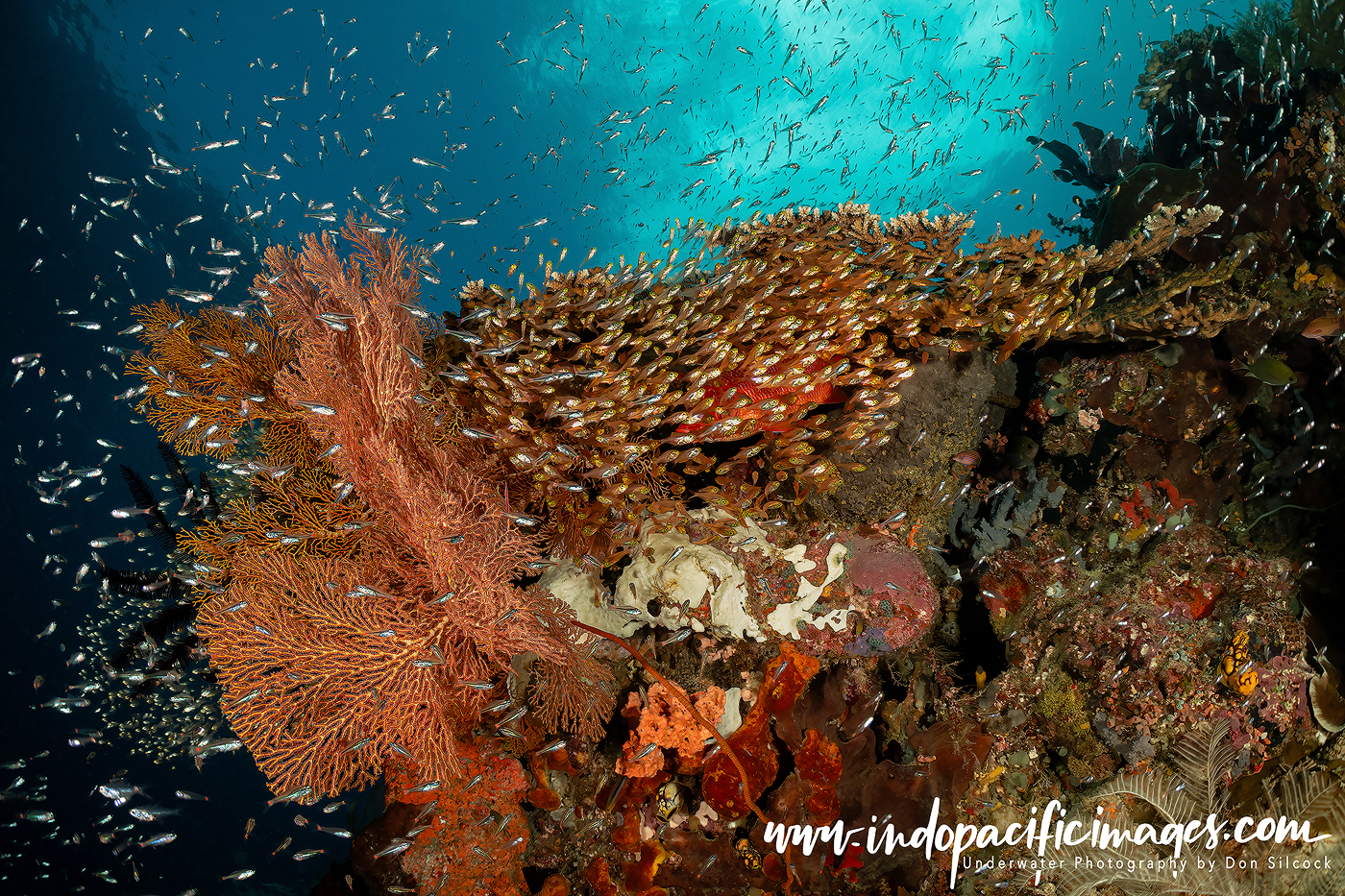
Diving Cape Kri
Cape Kri is one of the best known of the many dive sites in the Dampier Strait. And on any given day numerous divers can be seen entering the water there. Many liveaboards include it in their itineraries and, until this year, all my dives at Cape Kri had been done that way. But I always surfaced from those dives convinced that I was not seeing the site at its best.
The sheer density of the reef systems at Cape Kri. Coupled with the intensity of its biomass, can be a bit overwhelming. The abundance of marine life is so vast that it becomes challenging to absorb it all. And despite being aware that I was in a truly exceptional place, it often felt like I was merely skimming over the best bits.
This year, I’ve been fortunate to dive Cape Kri numerous times from Sorido Bay. And the difference in the overall experience has been truly remarkable. Essentially that’s because the guides possess such an intimate knowledge of the site. And can “read the reef” so much better. Schooled as they are in the ways of the water. They know what to expect and where to look as the currents change with the tide.
It’s kind of like wandering aimlessly round a museum versus being given a personally guided tour by the curator!
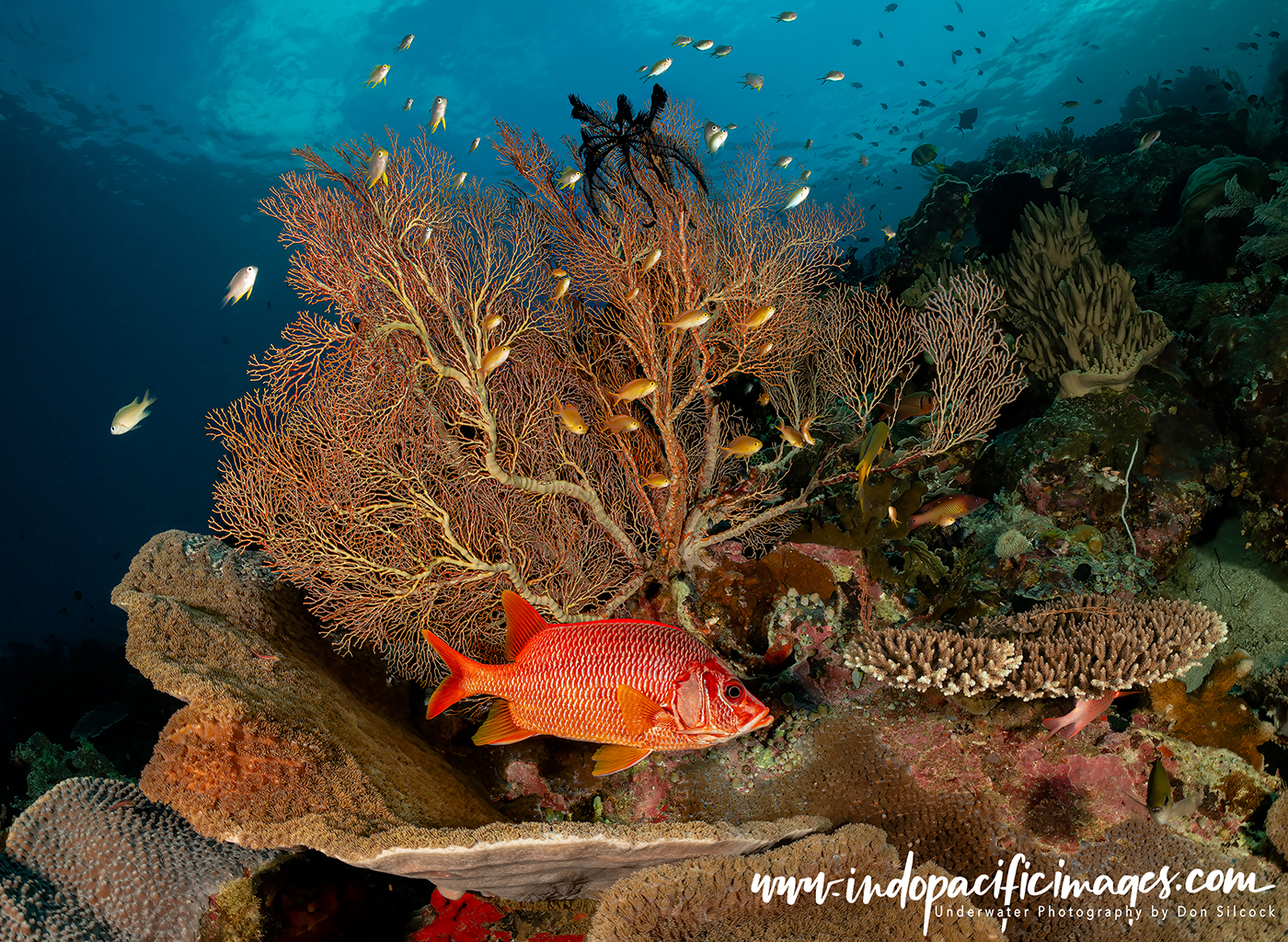
The World’s Best House Reef – In at Dawn…
As I got to know the Cape better, I learned that a dawn dive on an incoming tide provides a special opportunity to see the reef systems at their most dynamic. Because as the marine life emerges from the nooks and crannies of the reef that has provided their nighttime shelter. Hunger is the dominant motivation.
The incoming tide, rich with nutrients from the deep basins to the north, is the catalyst that quickly brings everything to the boil! I managed to time my return trip to Sorido Bay to do a dawn dive. And on the third day of my stay, we were loading our gear in the boat as the first signs of light were appearing in the sky and in position as the sun began to rise above the horizon.
Our timing was near perfect as there was enough initial light to watch the marine life stir, as the current did its job and raised the tempo of the reef. Then, as we watched on over the next sixty minutes or so, the large schools of jacks, barracuda, sweetlips and surgeonfish Cape Kri is renowned for became increasingly animated and aggressive as they hunted for food.
By the time we exited the whole area was going off. As predators pounced and potential victims dodged for cover in a true Darwinian example of the survival of the fittest. It was quite an experience and worth every lost second of sleep!
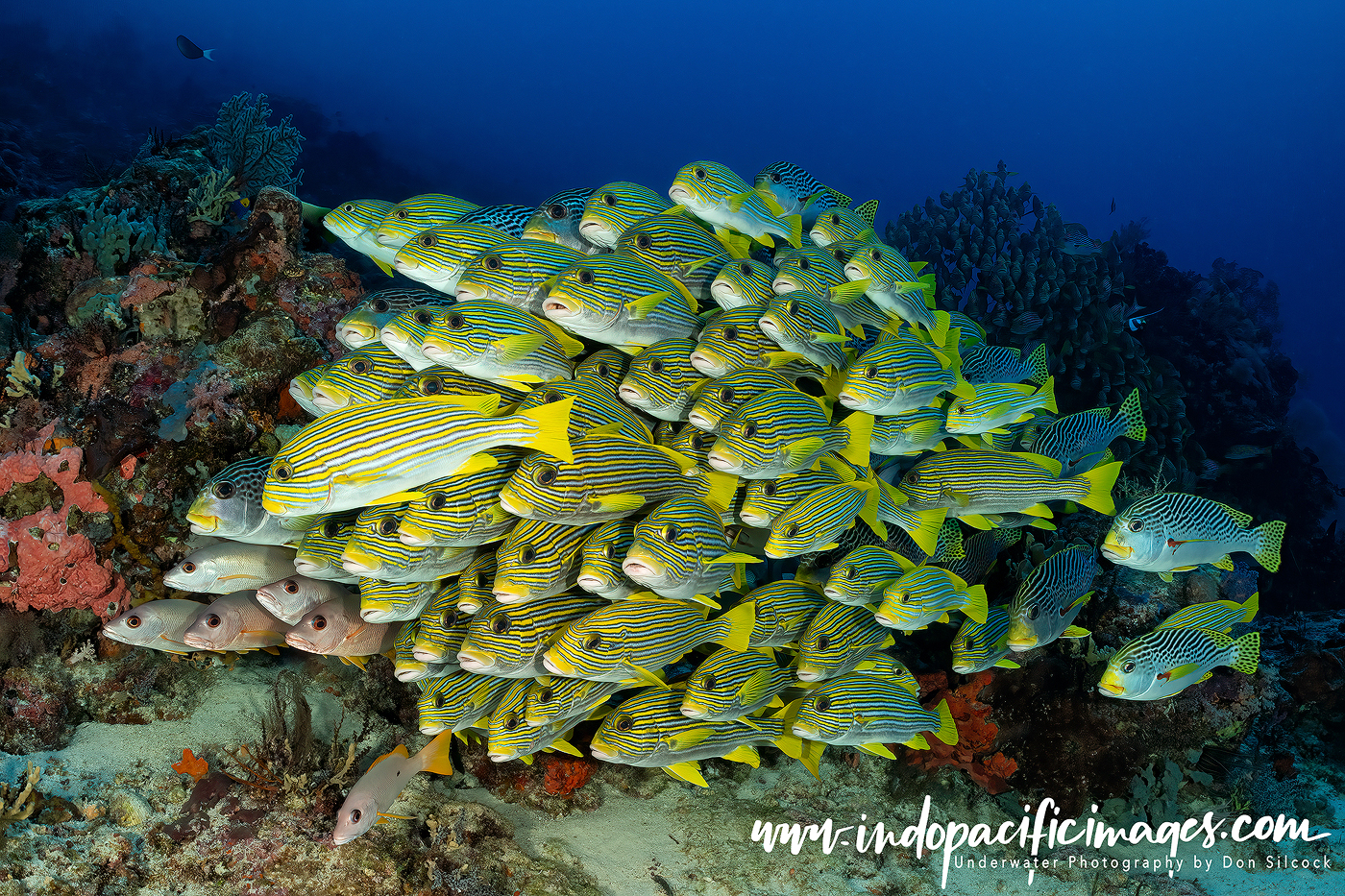
The World’s Best House Reef – In Summary…
Without doubt, the Dampier Strait has some of the very best tropical diving in the world. And Cape Kri is one of the best sites in the Strait.
What makes it so special are the rich currents that flow around it. And yes – those currents can be challenging… So much so that you really must be properly guided to dive it at the right time.
But it’s not a one-shot wonder that you get in your logbook and move on from. It’s more like a fine wine that demands your full attention and appreciation.
Pay it the attention it deserves. Learn it’s moods as the currents ebb & flow. And you will be richly rewarded as the essence of Raja Ampat diving is on display before you!
Scuba Diver Article
Scuba Diver magazine recently published a five-page article of mine on Diving Cape Kri. And you can use the link to download a copy of it.
